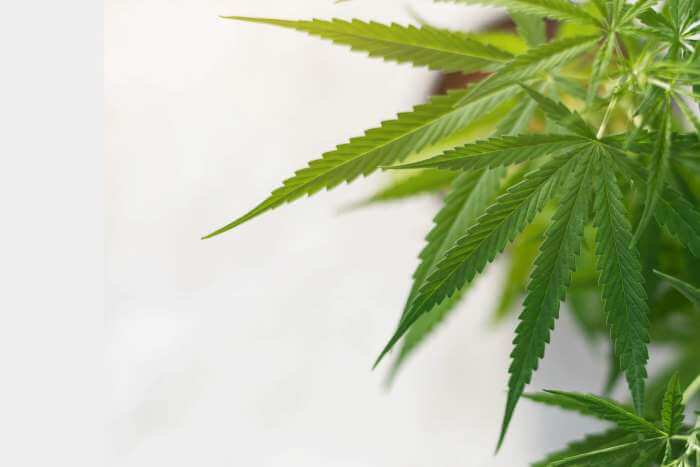In recent years, many people have started to explore the use of cannabis for managing muscle pain. Some people claim that the compounds in cannabis, such as cannabidiol (CBD), have therapeutic properties that can relieve muscle pain and improve recovery.

What Does Cannabis Do to Muscles?
Mechanism of action of cannabinoids on muscles
The human body has an endocannabinoid system (ECS) that regulates various physiological processes, including pain perception and muscle function. Cannabinoids, such as THC and CBD, interact with the ECS and can alter its function.
THC is believed to reduce pain and muscle spasms by binding to the CB1 receptors in the central nervous system. On the other hand, CBD is thought to have anti-inflammatory and analgesic properties that may help reduce muscle pain and improve recovery.
Effects of cannabis on muscle pain and tension
According to some studies, cannabis may help alleviate muscle pain, especially in patients with conditions such as fibromyalgia and multiple sclerosis. In these patients, the use of cannabis has been associated with reduced pain intensity and improved quality of life.
Additionally, some people use cannabis to relax their muscles and reduce tension. The relaxing effect of cannabis is thought to be related to the action of THC on the CB1 receptors, which can alter the release of neurotransmitters and reduce muscle spasms.
However, it is important to note that the evidence on the effectiveness of cannabis for muscle pain and tension is still limited and more research is needed to fully understand its effects.
Is Cannabis a Muscle Relaxant?

Evidence on the Muscle Relaxing Effects of Cannabis
Cannabis has long been used as a natural remedy for a variety of conditions, including muscle pain. While more research is needed to fully understand the mechanisms behind its effects on muscles, studies have shown that the active compounds in cannabis can have a relaxing effect on the muscles.
One study from 2009 found that the use of medical cannabis was associated with decreased muscle spasms and improved mobility in patients with multiple sclerosis. In addition, a 2018 study conducted on animals showed that the administration of a synthetic cannabinoid reduced muscle spasms and increased limb movement in a rat model of spinal cord injury.
These studies suggest that cannabis may have muscle relaxing properties, but more research is needed to fully understand its effects and potential as a muscle relaxant.
Comparison with Traditional Muscle Relaxants
Traditional muscle relaxants, such as carisoprodol and cyclobenzaprine, are prescription medications that are used to treat muscle pain and spasms. These medications work by blocking the transmission of pain signals to the brain and relaxing the muscles.
While traditional muscle relaxants are effective, they can also have side effects such as drowsiness, nausea, and dizziness. In contrast, cannabis has been shown to have few side effects and may be a safer alternative for those looking for a natural way to manage muscle pain.
However, it is important to note that cannabis is not yet approved by the FDA as a treatment for muscle pain and more research is needed to fully understand its potential as a muscle relaxant. Nevertheless, many patients with muscle pain have reported finding relief through the use of cannabis, and its popularity as a natural remedy for muscle pain continues to grow.
What Type of Cannabis is Best for Muscle Relaxation and Focus?
Different Types of Cannabis Products for Muscle Pain
When it comes to using cannabis for muscle pain, there are several different products to choose from, each with its own unique set of benefits and drawbacks. Some of the most popular options include:
- Flower: The dried, smokable flowers of the cannabis plant are one of the most classic forms of cannabis. They offer the full range of cannabinoids and terpenes, allowing you to experience the full effects of the plant.
- Edibles: Cannabis-infused edibles are a great option for those who prefer not to smoke or vaporize their cannabis. They can be consumed orally, and offer a longer-lasting and more potent experience than other forms of cannabis.
- Tinctures: Tinctures are cannabis extracts that are typically consumed orally. They are made by soaking the flowers or leaves of the plant in a high-proof alcohol, and then straining out the plant material.
- Topicals: Cannabis-infused topicals are another option for those who prefer not to ingest cannabis. They can be applied directly to the skin, and offer localized relief without producing any psychoactive effects.
Considerations for Choosing the Best Type for Your Needs
When choosing a form of cannabis to help with muscle pain, there are several factors to consider. For example:
- Potency: Different forms of cannabis can have different levels of potency, so it is important to consider what strength of product you need.
- Delivery method: Consider the method of delivery that is most comfortable for you. Some people prefer to smoke or vaporize their cannabis, while others prefer edibles or topicals.
- Dosage: Make sure to consider the recommended dosage for the form of cannabis you choose. Different forms of cannabis can have different dosages, so it is important to read the label and start with a low dose.
- Cost: Finally, consider the cost of the form of cannabis you choose. Some forms, such as edibles and topicals, can be more expensive than others.
Overall, the best form of cannabis for muscle pain will depend on your individual needs and preferences. It is important to do your research and consult with a healthcare provider to determine the best option for you.
Is Indica or Sativa Better for Muscle Pain?

Characteristics of Indica and Sativa Strains
When it comes to choosing a strain of cannabis to relieve muscle pain, the two most common types are indica and sativa. Indica strains are known for their relaxing and sedating effects, and are often used for stress relief and pain management. Sativa strains, on the other hand, are known for their uplifting and energetic effects, and are often used for creative stimulation and improved mood.
Effects of Indica and Sativa Strains on Muscle Pain
The effects of indica and sativa strains on muscle pain can be quite different, with each offering unique benefits. Indica strains are often used for their powerful relaxing effects, which can help to soothe aching muscles and reduce inflammation. On the other hand, sativa strains may help to increase focus and improve physical performance, making them a good option for athletes and active individuals.
The choice between indica and sativa strains for muscle pain ultimately comes down to personal preference and individual needs. Some people may find that a relaxing indica strain is best for relieving muscle pain and tension, while others may prefer the energy and focus boost of a sativa strain. It’s important to try a variety of strains and dosages to determine what works best for you.
Regardless of whether you prefer indica or sativa strains, it’s important to choose a high-quality product from a reputable source. This will help ensure that you get the best results and avoid any potential negative side effects. When using cannabis for muscle pain, it’s also important to start with a low dose and gradually increase until you find the right amount for your needs.
Can You Use CBD as a Muscle Relaxer?

Benefits of Using CBD for Muscle Pain
Cannabidiol (CBD) is one of the most well-known and well-studied compounds found in the cannabis plant. It has been shown to have a number of therapeutic benefits, including the ability to relieve muscle pain. CBD works by interacting with the endocannabinoid system, which is a network of receptors in the body that are involved in regulating a number of functions, including pain, mood, and sleep.
Studies have shown that CBD can reduce inflammation in the muscles and help to relieve pain, making it an effective option for those who suffer from muscle pain. Unlike THC, CBD does not produce psychoactive effects, which makes it an appealing option for those who want to experience the benefits of cannabis without feeling “high”.
How to Use CBD for Muscle Relaxation
There are several different ways to use CBD for muscle pain, including topicals, tinctures, and edibles. Topicals are creams, lotions, and salves that are applied directly to the skin, while tinctures are drops that are taken under the tongue. Edibles are food products that are infused with CBD and are taken orally.
When choosing the right product for your needs, it is important to consider the potency of the product, as well as the delivery method. Topicals are typically best for localized pain, while tinctures and edibles are better for more widespread pain. It is also important to start with a low dose and gradually increase until you find the right amount that works for you.
In conclusion, using CBD for muscle pain is a safe and effective way to relieve pain and promote relaxation. Whether you choose a topical, tincture, or edibles, make sure to choose a high-quality product from a trusted source to ensure the best results.
Resources:
If you’re looking for further information on cannabis use for muscle pain here is a list of resources you can check out.
- National Institutes of Health (NIH): https://www.ncbi.nlm.nih.gov/pmc/articles/PMC5897458/
- Journal of Clinical Psychology: https://www.ncbi.nlm.nih.gov/pmc/articles/PMC5938896/
- European Journal of Pain:
- National Center for Biotechnology Information (NCBI): https://www.ncbi.nlm.nih.gov/pmc/articles/PMC5604825/
- Clinical Psychology Review: https://www.ncbi.nlm.nih.gov/pmc/articles/PMC6167297/
- American Society of Anesthesiologists: https://www.asahq.org/whensecondscount/pain-management/cannabis-and-pain/









